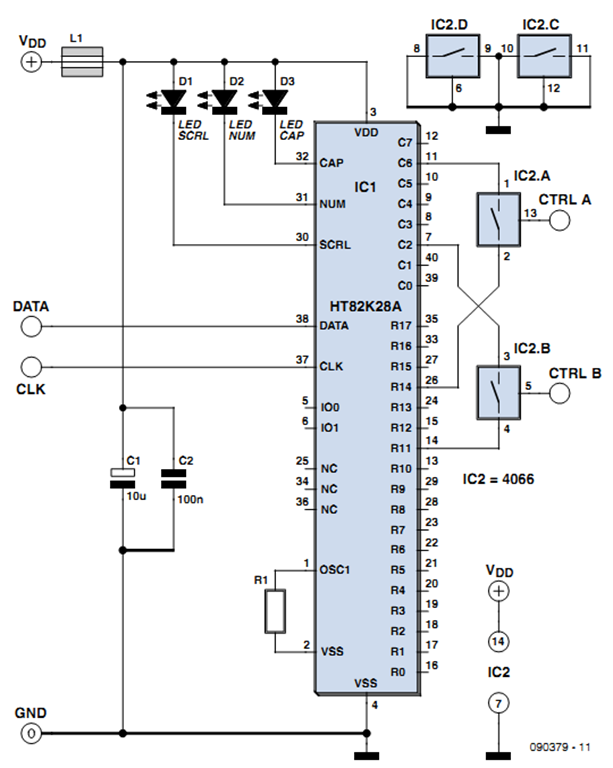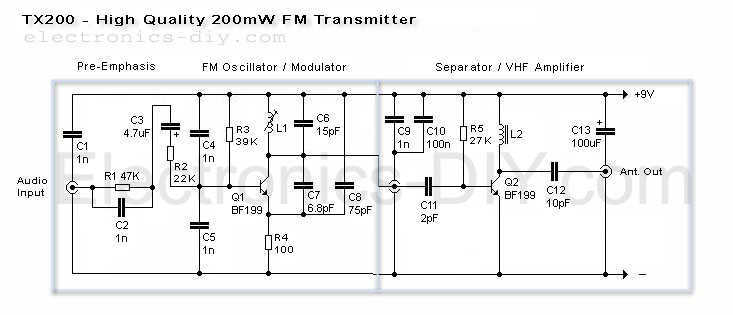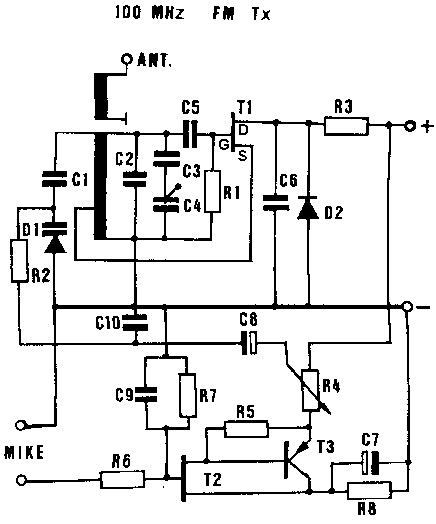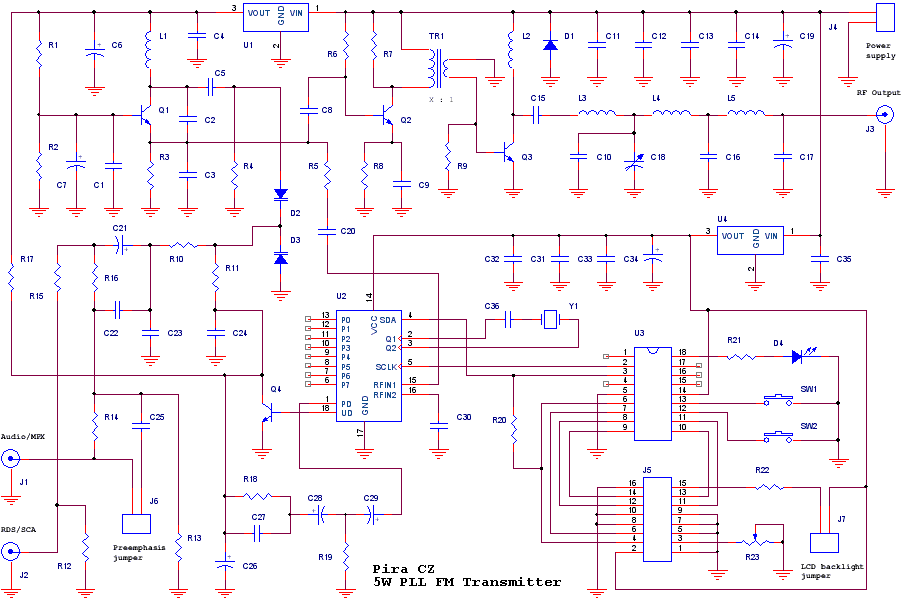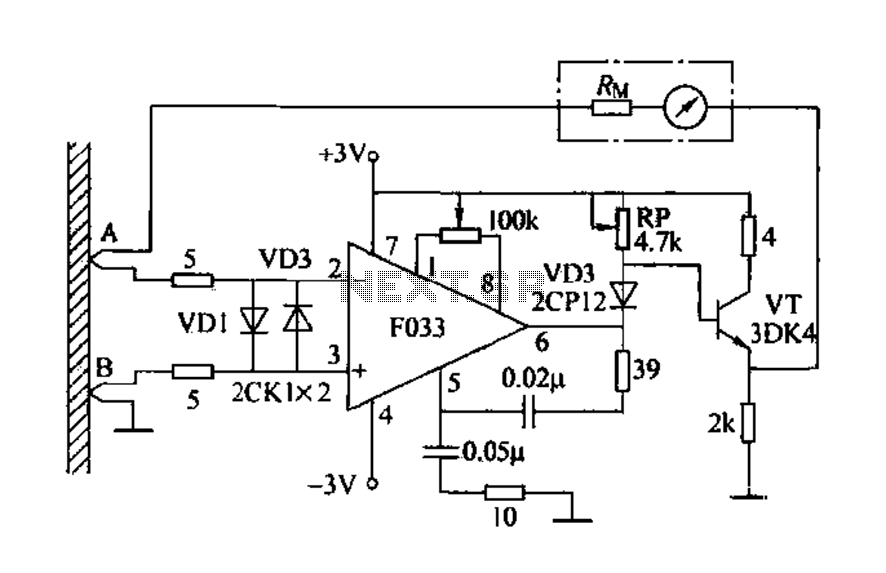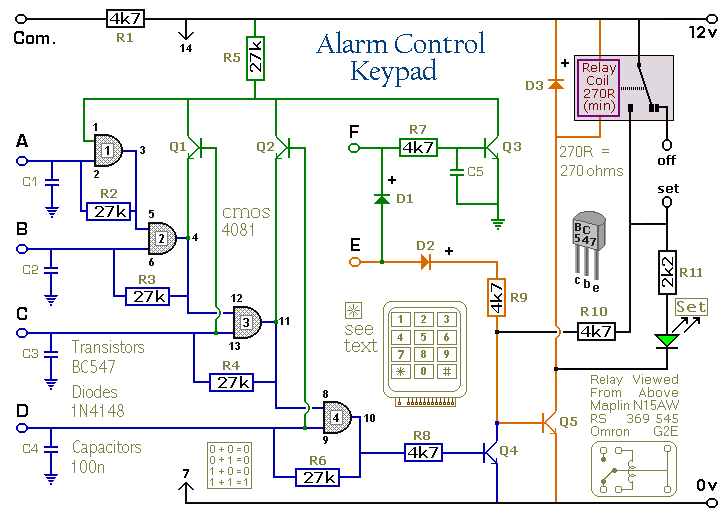
Transmitter Negative Key Line Keyer

Using an NTE288 (or ECG288, GE223, or SK3434), this circuit can key a negative line up to -300 V maximum. Do not use this circuit to key a vacuum-tube amplifier that draws grid current because the keying transistor might be damaged under these conditions.
The circuit utilizing the NTE288, ECG288, GE223, or SK3434 is designed to control a negative voltage line, capable of handling up to -300 V. This high-voltage switching capability is particularly useful in applications where a negative voltage needs to be selectively activated or deactivated, such as in certain types of power supplies or signal processing circuits.
Key components of the circuit include the NTE288 transistor, which serves as the primary switching element. This transistor is designed to handle high voltages and can effectively control the flow of current to the load connected to the negative line. The circuit should be configured with appropriate biasing and protection components to ensure reliable operation. For instance, a resistor may be placed in series with the base of the transistor to limit the base current, and a diode may be included to protect against back EMF if inductive loads are involved.
It is critical to note that this circuit is not suitable for keying vacuum-tube amplifiers that draw grid current. In such applications, the keying transistor may be subjected to conditions that exceed its rated specifications, leading to potential damage. Therefore, careful consideration should be given to the load characteristics and operating conditions when implementing this circuit.
In addition to the transistor, the circuit may require additional components such as capacitors for decoupling, resistors for biasing, and possibly a zener diode for voltage clamping to protect the transistor from overvoltage conditions. Proper layout and thermal management should also be considered to ensure the reliability and longevity of the circuit under high-voltage operation.
Overall, this circuit provides a robust solution for controlling high negative voltages, provided that it is used within its specified limits and with consideration for the load characteristics. Using an NTE288 (or ECG288, GE223, or SK3434), this circuit can key a negative line up to - 300 V maxim um. Do not use this circuit to key a vacuum-tube amplifier that draws grid current because the keying transistor might be damaged under these conditions.
The circuit utilizing the NTE288, ECG288, GE223, or SK3434 is designed to control a negative voltage line, capable of handling up to -300 V. This high-voltage switching capability is particularly useful in applications where a negative voltage needs to be selectively activated or deactivated, such as in certain types of power supplies or signal processing circuits.
Key components of the circuit include the NTE288 transistor, which serves as the primary switching element. This transistor is designed to handle high voltages and can effectively control the flow of current to the load connected to the negative line. The circuit should be configured with appropriate biasing and protection components to ensure reliable operation. For instance, a resistor may be placed in series with the base of the transistor to limit the base current, and a diode may be included to protect against back EMF if inductive loads are involved.
It is critical to note that this circuit is not suitable for keying vacuum-tube amplifiers that draw grid current. In such applications, the keying transistor may be subjected to conditions that exceed its rated specifications, leading to potential damage. Therefore, careful consideration should be given to the load characteristics and operating conditions when implementing this circuit.
In addition to the transistor, the circuit may require additional components such as capacitors for decoupling, resistors for biasing, and possibly a zener diode for voltage clamping to protect the transistor from overvoltage conditions. Proper layout and thermal management should also be considered to ensure the reliability and longevity of the circuit under high-voltage operation.
Overall, this circuit provides a robust solution for controlling high negative voltages, provided that it is used within its specified limits and with consideration for the load characteristics. Using an NTE288 (or ECG288, GE223, or SK3434), this circuit can key a negative line up to - 300 V maxim um. Do not use this circuit to key a vacuum-tube amplifier that draws grid current because the keying transistor might be damaged under these conditions.
